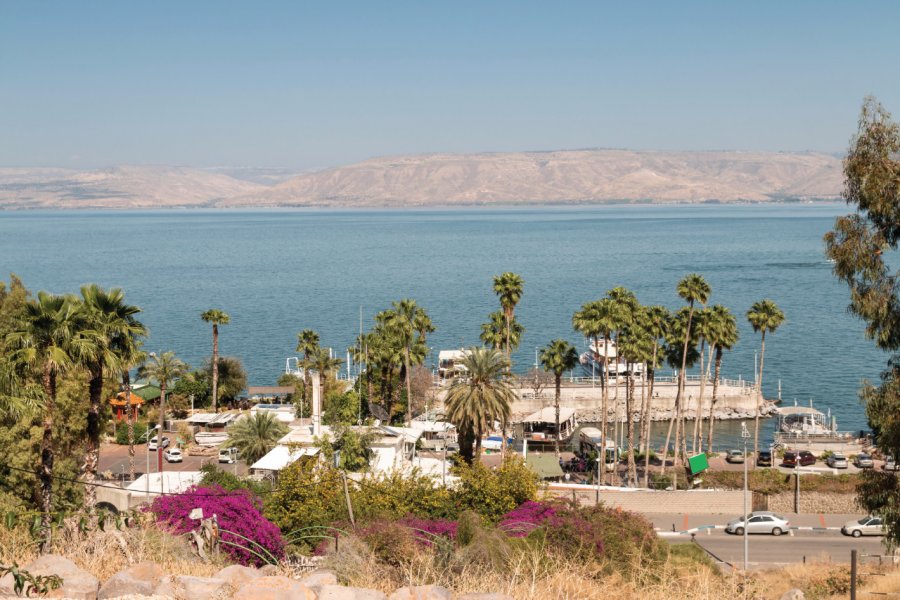Travel Guide Tiberias
Find an accommodation
Advertising
Tiberias is a city of nearly 44,000 inhabitants with a large ultra-Orthodox community. In addition to the many biblical sites around the lake of the same name, the city is dotted with tombs of famous rabbis that have made it the fourth holiest city in Judaism. Tourism here is essentially religious or oriented towards balneotherapy, due to the presence of many hot springs. While the large establishments offer continuous entertainment, day and night, there are few places to go out in the city in the evening, especially during Sabbath when almost all shops and restaurants are closed. In season, however, the city is invaded by many Israelis who come here on holiday. Expect very prohibitive prices in July and August, but also on the occasion of major Jewish holidays.HistoryTiberias was founded in 18 BC by Herod Antipas, son of Herod the Great, who named it after the Emperor Tiberius. After the revolt against the Romans, led by Simon Bar Kokhba (132-135), the Jews were driven out of Jerusalem, and Tiberias became the centre of Jewish life in the Holy Land. It was here that the Sanhedrin - the highest religious authority - settled and the Talmud was largely written. Tiberias remained the true capital of Judaism until the Arab conquest: before that, the city's population reached 40,000, making it as large a city as it is today. The Crusaders took the city in 1099 and built a fortress there. Saladin seized it in 1187, after the defeat of the crusaders at Hattin, near Lake Tiberias. The city then began to decline and suffered several earthquakes. In the 16th century, during the Ottoman period, Doña Gracia, a marrane (Spanish Jewess converted to Catholicism), received Tiberias and the surrounding villages as a gift from Emperor Suleyman the Magnificent. She had the city restored, built a yeshiva (Talmudic school) and encouraged Spanish Jews fleeing the Inquisition to settle there. His nephew, Jospeh Nassi (1524 -1579), who ruled the city in 1561, became one of the precursors of Zionism. In the 18th and 19th centuries, many rabbis lived in Tiberias, which had become an important centre of Jewish education. But in 1837, the city was again demolished by a violent earthquake. Rebuilt, Tiberias began to attract Zionist immigrants. In 1948, when the British mandate ended, the city was predominantly Jewish. At the end of the War of Independence, it will be integrated into the State of Israel, while the other side of the lake will remain Syrian until 1967.
What to visit Tiberias?
Advertising
Weather at the moment
Advertising
Organize your trip with our partners Tiberias
Transportation
Book your plane tickets
Car Rental
Boat rental
Accommodation & stays
Find a hotel
Holiday rental
Find your campsite
Tailor-made trip
Immersion travel
Services / On site
Activities & visits
Find a doctor














